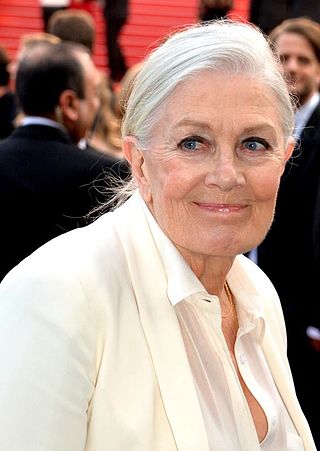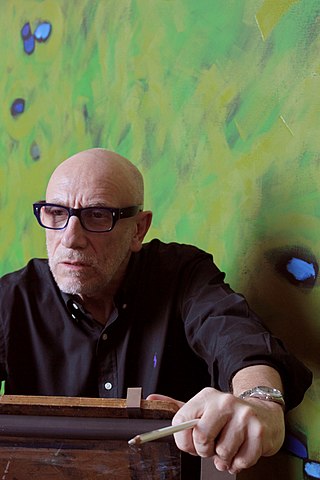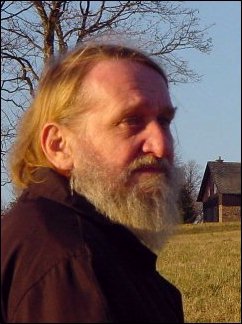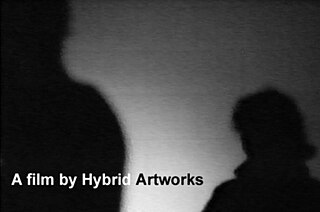Related Research Articles

Dame Vanessa Redgrave is an English actress and activist. Throughout her career spanning over six decades, Redgrave has garnered numerous accolades, including an Academy Award, a Tony Award and two Primetime Emmy Awards, making her one of the few performers to achieve the Triple Crown of Acting. She has also received various honorary awards, including the BAFTA Fellowship Award, the Golden Lion Honorary Award, and an induction into the American Theatre Hall of Fame.

The National Science and Media Museum, located in Bradford, West Yorkshire, is part of the national Science Museum Group in the UK. The museum has seven floors of galleries with permanent exhibitions focusing on photography, television, animation, videogaming, the Internet and the scientific principles behind light and colour. It also hosts temporary exhibitions and maintains a collection of 3.5 million pieces in its research facility.

The British Film Institute (BFI) is a film and television charitable organisation which promotes and preserves film-making and television in the United Kingdom. The BFI uses funds provided by the National Lottery to encourage film production, distribution, and education. It is sponsored by the Department for Culture, Media and Sport, and partially funded under the British Film Institute Act 1949.

Gary Indiana is an American writer, actor, artist, and cultural critic. He served as the art critic for the Village Voice weekly newspaper from 1985 to 1988. Indiana is best known for his classic American true-crime trilogy, Resentment, Three Month Fever: The Andrew Cunanan Story, and Depraved Indifference, chronicling the less permanent state of “depraved indifference” that characterized American life at the millennium's end. In the introduction to the recently re-published edition of Three Month Fever, critic Christopher Glazek has coined the phrase deflationary realism to describe Indiana's writing, in contrast to the magical realism or hysterical realism of other contemporary writing.
Jane Wilson and Louise WilsonRA Elect are British artists who work together as a sibling duo. Jane and Louise Wilson's art work is based in video, film and photography. They are YBA artists who were nominated for the Turner Prize in 1999.
Peter Campus, often styled as peter campus, is an American artist and a pioneer of new media and video art, known for his interactive video installations, single-channel video works, and photography. His work is held in the collections of numerous public institutions, including The Museum of Modern Art, Whitney Museum of American Art, Solomon R. Guggenheim Museum, Hamburger Bahnhof - Museum für Gegenwart, Tate Modern, Museo Reina Sofía, Albright-Knox Art Gallery, Walker Art Center, and the Centre Georges Pompidou. The artist works on the south shore of Long Island.
Chris Petit is an English novelist and filmmaker. During the 1970s he was Film Editor for Time Out and wrote in Melody Maker. His first film was the cult British road movie Radio On, while his 1982 film An Unsuitable Job for a Woman was entered into the 32nd Berlin International Film Festival. His films often have a strong element of psychogeography, and he has worked frequently with the writer Iain Sinclair. He has also written a number of novels, including Robinson (1993).
Iain Forsyth and Jane Pollard are British artists and filmmakers.

Brian Clarke is a British painter, architectural artist and printmaker, known for his large-scale stained glass and mosaic projects, symbolist paintings, set designs, and collaborations with major figures in Modern and contemporary architecture.

Owen Hatherley is a British writer and journalist based in London who writes primarily on architecture, politics and culture.
Amy Greenfield is a filmmaker and writer living in New York City. She is an originator of the cine-dance genre and a pioneer of experimental film and video.

Robinson in Ruins is a 2010 British documentary film by Patrick Keiller and narrated by Vanessa Redgrave. It is a sequel to Keiller's previous films, London (1994) and Robinson in Space (1997). It documents the journey of the fictional title character around the south of England. It premiered at the 67th Venice International Film Festival in September 2010.

Chris Welsby is a Canadian experimental filmmaker, New Media and gallery installation artist. Born in the UK, in the 1970s Welsby was a member of the London Film-Makers' Co-op, and co-founder of the Digital Media Studio at the Slade School of Fine Arts, UCL, London. He immigrated to Canada in 1989. He is considered one of the pioneers of expanded cinema and moving image installation and was one of the first artists to exhibit film installations at the Tate and Hayward galleries London. His expanded cinema works and installations have since continued to break new conceptual ground and attract critical attention. A. L. Reece, in British Film Institute's A History of Experimental Film and Video, wrote: "Twenty-five years ago, when he made his first projections for large spaces, film and art rarely met in the gallery; now it is common and installation art is a distinct practice."

BFI Southbank is the leading repertory cinema in the UK, specialising in seasons of classic, independent and non-English language films. It is operated by the British Film Institute.

Alan Thomas Kitching is a British graphic designer, animator, architect and software developer, who is perhaps best known for his pioneering work in computer animation, creating the Antics 2-D Animation software in 1972.

Hybrid Artworks is an interdisciplinary research and performance art cooperative originally based in Hull, UK. It was established in 1995 and produced pieces of performance art, video installation theatre, texts and essays.

Simon Fujiwara is a British/Japanese artist.
The BFI Gallery was the BFI's contemporary art gallery dedicated to artists' moving image housed within BFI Southbank, the British Film Institute's flagship venue in London. The space was funded by the BFI with Arts Council England support and opened on 14 March 2007, to coincide with the reopening of the site. Its programme of new commissions, events and associated artists' film screenings was curated by Elisabetta Fabrizi, BFI Head of Exhibitions. The programme included exhibitions by Michael Snow, John Akomfrah, Apichatpong Weerasethakul, Pierre Bismuth, Jane & Louise Wilson, Peter Campus, Patrick Keiller, Phil Collins, Matt Collishaw, Yvonne Rainer, Julian Rosensfeld, Michel Gondry, Deimantas Narkevicious, Mark Lewis. Film programmes linked to the gallery exhibitions included a retrospective of the films of Sergei Paradjanov and of Michael Snow.
Philip Coy is an English artist and experimental filmmaker known for his public works and films exploring architectures and language. He works across a range of media including sculpture, film, video installation, sound installation, photography, text, and performance.
London is a 1994 British essay film written and directed by Patrick Keiller, narrated by Paul Scofield.
References
- ↑ "The Future of Landscape and the Moving Image". The Future of Landscape and the Moving Image.
- ↑ Redgrave In Ruins for Keiller Screen Daily. 17 February 2010